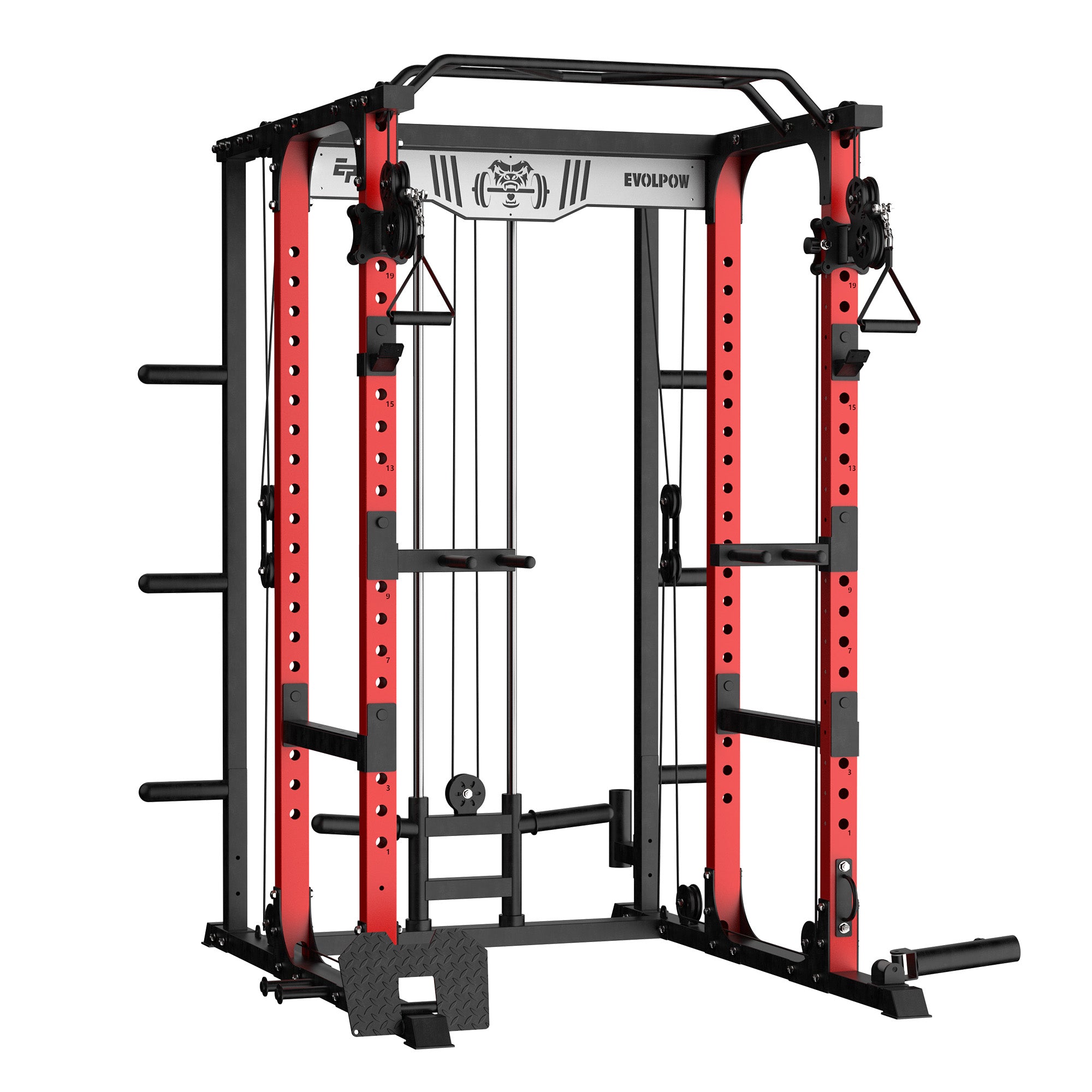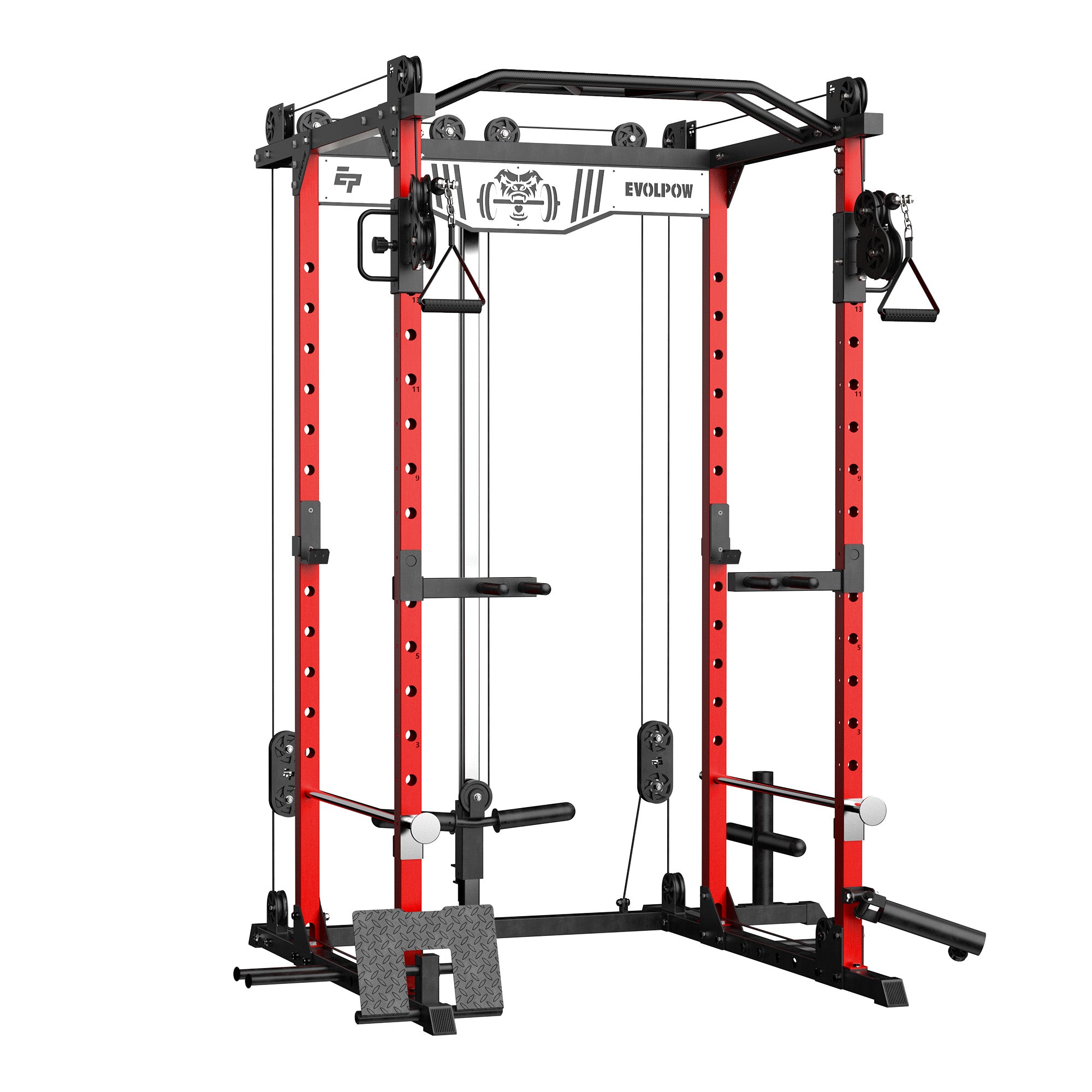A weight bench is an essential piece of home gym equipment, whether you're training in a home gym or a commercial fitness facility. Apart from some leg-focused and heavy back exercises, a bench is involved in nearly every major movement we perform, such as bench press, seated shoulder press, chest flyes, and single-arm dumbbell rows. Choosing between a flat bench and an adjustable weight bench can significantly impact both your training style and overall results. In this article, we’ll break down the structure, usage, and training scenarios of each to help determine which is better suited for your goals. If you're building a comprehensive home gym setup, selecting the right bench is crucial.
CONTENT
Flat Bench Overview: Features and Common Uses
Adjustable Bench Overview: Versatility and Design
Key Differences Between Flat and Adjustable Benches
Choosing Based on Training Goals & Experience Level
Flat Bench Overview: Features and Common Uses

The flat bench typically features a fixed horizontal angle, serving as a stable piece of equipment for lying down or support. It's commonly used for upper body and some glute/leg exercises. A brief overview of the muscles and movements that can be trained with a flat bench helps highlight its distinctions.
For chest training, flat bench press and dumbbell flyes while lying on the bench can effectively work the entire pectoralis major, especially the midline of the chest, enhancing overall chest thickness.
For shoulder and core training, seated shoulder presses without back support are often performed. Due to the lack of a backrest, the weight used won’t be too heavy, but the movement targets both the front and side delts while also challenging core stability. Without assistance from the legs or a backrest, it’s difficult to lift very heavy, but this makes it an efficient upper-body isolation exercise. Another effective core movement on the flat bench is the lying leg raise. By gripping the legs of the bench and stabilizing the upper body, slow, controlled crunches with posterior pelvic tilt can be performed.
Back training options are relatively limited but still effective for muscle isolation. One-arm dumbbell rows using the flat bench allow for a maximum range of motion, which can increase engagement of the back muscles.
Lower-body training is simpler. For legs, single-leg step-ups using bodyweight can target the quads. For glutes, barbell hip thrusts are a favored movement, particularly popular among female trainees.
The stability and simplicity of training with a flat bench make it a popular choice among those focused on functional training. Additionally, the lack of adjustable angles or complex mechanisms means the flat bench is generally more budget-friendly.
Adjustable Bench Overview: Versatility and Design

An adjustable workout bench, as the name suggests, can be set at multiple angles to target a wider range of muscle groups. Compared to a flat bench, an adjustable bench allows for more detailed upper body training, which is why it’s favored by bodybuilding enthusiasts who focus on isolation exercises. Below, we'll use the BEB Bench from Evolpow as an example of a standard adjustable bench.
When training the chest with an adjustable bench, you’re not limited to the flat bench press—you can also perform incline and decline presses. This helps build a fuller chest and brings out more muscle definition, as isolation work is all about sculpting the physique.
For back training, you can still perform one-arm dumbbell rows like on a flat bench, but you can also adjust the back pad to a certain angle for chest-supported rows. With your chest resting on the back pad, you can use either a barbell or dumbbells for bilateral rows. Different angles allow you to target different areas of the back.
Shoulder training especially benefits from an adjustable bench. With back support, you can handle heavier weights safely. After strengthening your core stability, you can increase the load for seated overhead presses, which helps add size to your shoulders.
From a space-saving perspective, the adjustable angles eliminate the need to purchase separate incline/decline bench presses or preacher curl benches. Some benches also come with support wheels and smart storage features to further reduce space usage, making them perfect for home gyms and compact training studios.
Key Differences Between Flat and Adjustable Benches

From the analysis above, we can see that in terms of muscle training, nearly all exercises performed on a flat bench can be perfectly replicated on an adjustable weight bench, with the added benefit of more training variations and enhanced workout enjoyment.
When it comes to stability and load-bearing capacity, the choice largely depends on the material and structural design. Flat benches have a fixed, simple structure, which makes them naturally more stable. On the other hand, adjustable benches require more solid materials and reinforced construction to match that level of stability, and even then, their load capacity may not quite reach that of a flat bench.
From a training perspective, powerlifters often prefer flat benches because of their superior stability, especially since the weights they lift can be two to three times their body weight.
In terms of mobility, both types of benches have their advantages. Flat benches tend to be lighter and easier to move due to their simple structure, while adjustable benches often come with wheels for easier transportation.
For limited home gym space, a compact, foldable, adjustable weight bench—like Evolpow’s BED Bench—can be a great solution.
Choosing Based on Training Goals & Experience Level

Flat Bench: Based on training methods, the flat bench is recommended for beginners. Since it allows for fewer and more basic movements, it helps beginners quickly get into training mode and build consistent habits. At the same time, due to its strong load-bearing capacity and stability, powerlifters can also use it for specialized bench press training, making strength gains more effective and safer.
Adjustable Bench: With its multi-angle adjustment capability, the adjustable bench is more suitable for bodybuilding-style training. Bodybuilding focuses more on sculpting and isolating muscles from various angles, which this bench is designed to support—no need to elaborate further here.
CONCLUSION
In conclusion, when selecting a workout bench, it is essential to consider our home space, budget, and training goals. If we need flexibility and want to target different muscle groups with more specific movements, an adjustable bench is a great option. On the other hand, if we prioritize load capacity, greater stability, and building a solid foundation for training, a flat bench is the optimal choice. Though the two types of benches serve different purposes, both are the result of years of evolution in fitness equipment. Choosing the one that best suits our needs can significantly enhance our training efficiency.
FAQ
Q: Should I get a flat bench or adjustable bench?
A: We decide based on our training habits, home space, and home gym budget to choose which one suits us better.
Q: What are the benefits of an adjustable weight bench?
A: An adjustable weight bench enables us to adjust angles, targeting specific muscles, making it a great partner for bodybuilding-style training.
Q: What muscles does a flat bench work?
A: A flat bench can work most of the major muscles in our body, such as the pectoralis major, latissimus dorsi, shoulders, triceps, and the front part of the thighs.
REFERENCE
https://startingstrength.com/training/which-bench
https://startingstrength.com/video/lifts/main-lifts/the-role-of-the-feet-in-the-bench-press
https://www.youtube.com/watch?v=8POLF6ea7Mg






